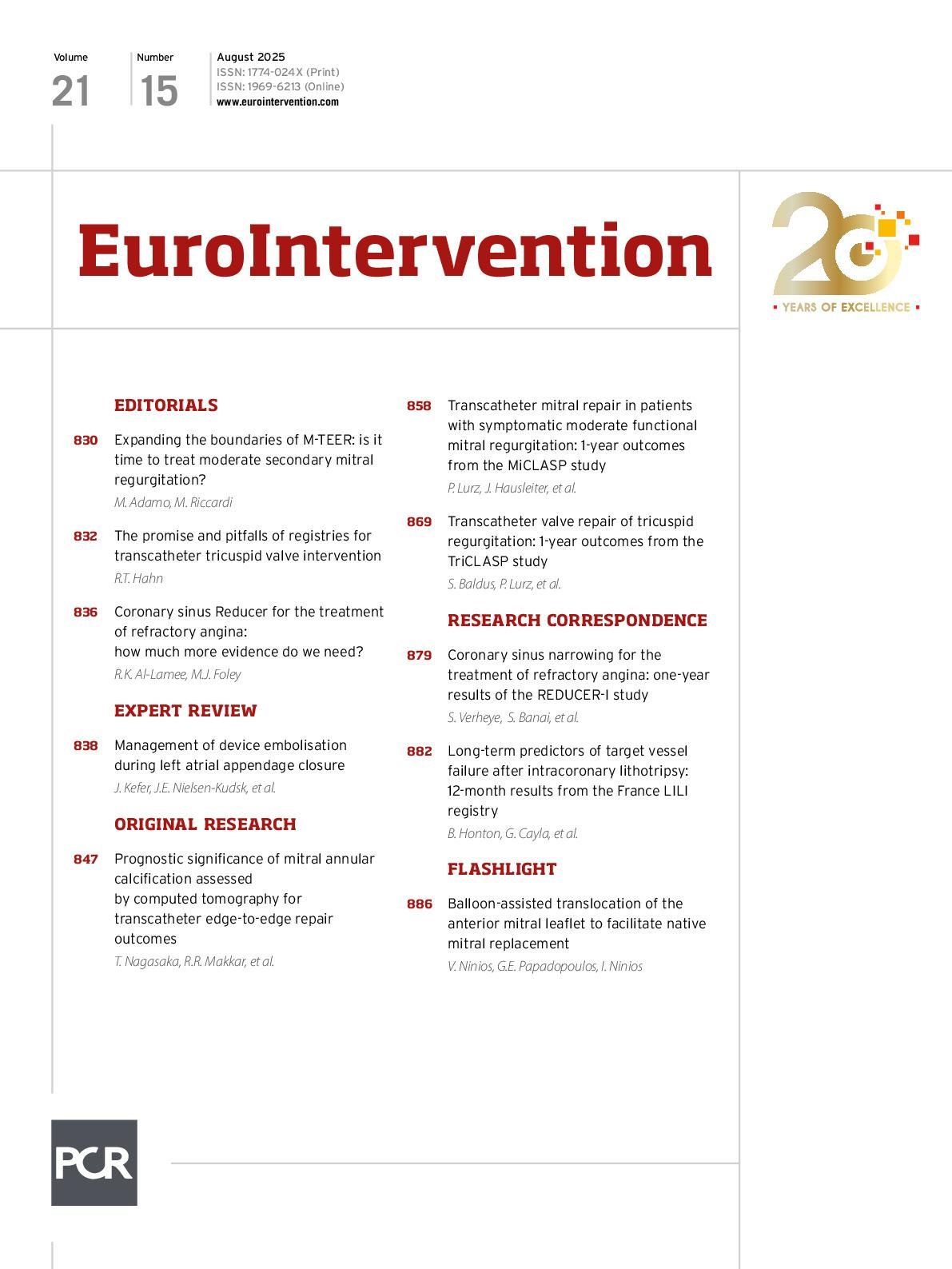Even if we’re still in midsummer, there is a hint of autumn in this issue, with a selection of the kind of topics you might find at PCR London Valves next November. But that’s not all, as you can see in this issue!
LAA closure device embolisation
In an expert review, Joelle Kefer, Jens Erik Nielsen-Kudsk and colleagues from the European Left Atrial Appendage Closure Club address the management of device embolisation during left atrial appendage closure (LAAC). The authors present strategies for specific LAAC devices in different clinical scenarios,
as well as techniques ranging from percutaneous recapture to transseptal retrieval.
CT mitral annular calcification and TEER outcomes
Takashi Nagasaka, Raj R. Makkar and colleagues examine whether using pre-procedural computed tomography to visualise and stratify mitral annular calcification can impact procedural success and prognosis. After analysing parameters such as calcium thickness, distribution involvement, and leaflet calcification, the authors found that while severity of mitral annular calcification did not affect all-cause mortality after transcatheter edge-to-edge repair (TEER), calcium thickness >5 mm and leaflet calcification were associated with worse outcomes.
Using the PASCAL system: 1-year outcomes from the MiCLASP study in patients with moderate functional mitral regurgitation
Philipp Lurz, Jorg Hausleiter and colleagues assess whether patients with moderate functional mitral regurgitation might benefit from mitral TEER. In this subanalysis of the 1-year outcomes of the MiCLASP study, patients had sustained clinical, functional and quality-of-life improvements after treatment with the PASCAL transcatheter valve repair system. This article is accompanied by an editorial from Marianna Adamo and Mauro Riccardi.
Using the PASCAL system: 1-year outcomes from the TriCLASP study
Stephan Baldus, Philipp Lurz and colleagues present the 1-year outcomes of the prospective, single-arm, post-market TriCLASP study, in which the PASCAL transcatheter valve repair system was evaluated for treating patients with symptomatic tricuspid regurgitation. Both safety and efficacy were demonstrated. Rebecca T. Hahn contributes an editorial on the evaluation of device therapies for treating tricuspid regurgitation.
One-year results of the REDUCER-I study
In a research correspondence, Stefan Verheye, Shmuel Banai and colleagues discuss the 1-year follow-up results of the REDUCER-I study of patients with refractory angina treated with the coronary sinus Reducer, accompanied by an editorial by Rasha K. Al-Lamee and Michael J. Foley.
Long-term predictors of TVF post-IVL
Reporting on 12-month results from the France LILI registry, Benjamin Honton, Guillaume Cayla and colleagues assess the long-term safety and efficacy of intravascular lithotripsy in a large cohort of all-comer patients treated in routine clinical practice and identify new independent predictors of target vessel failure at 1 year.

